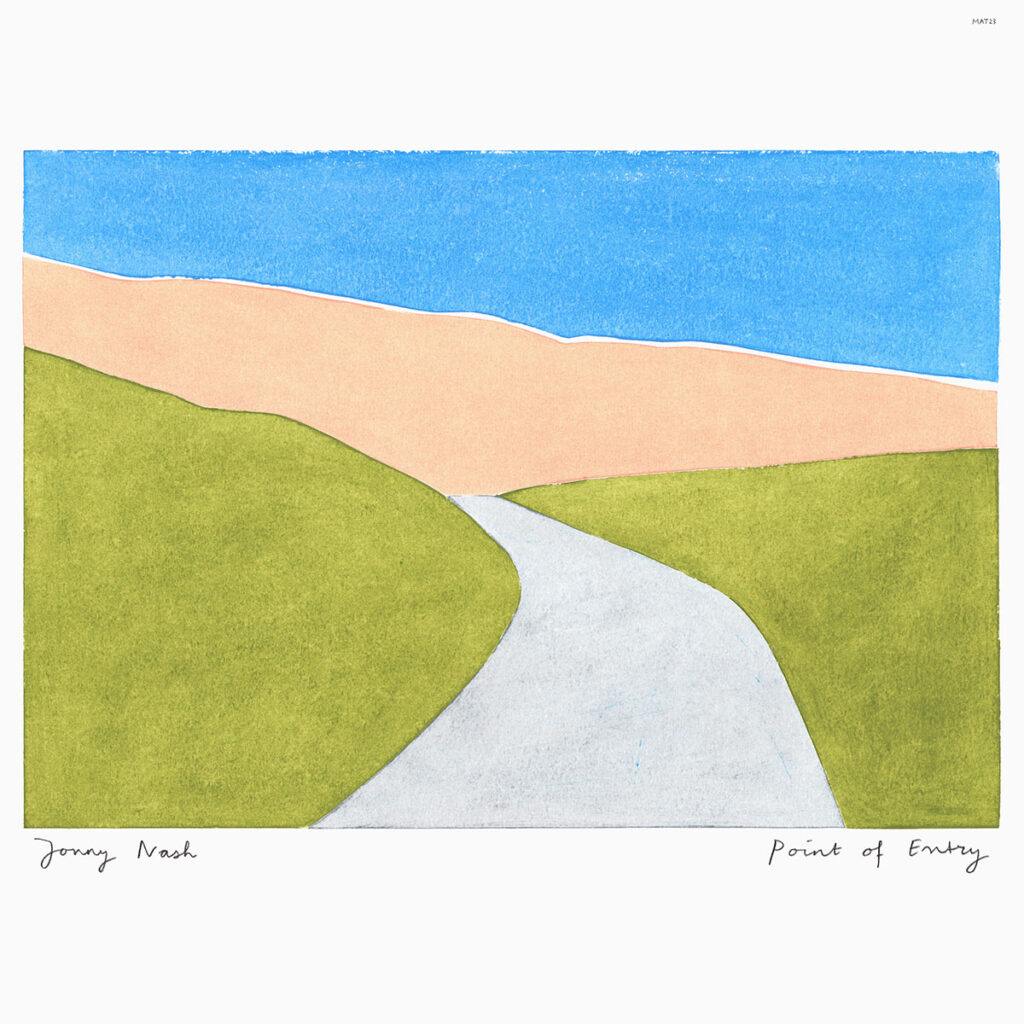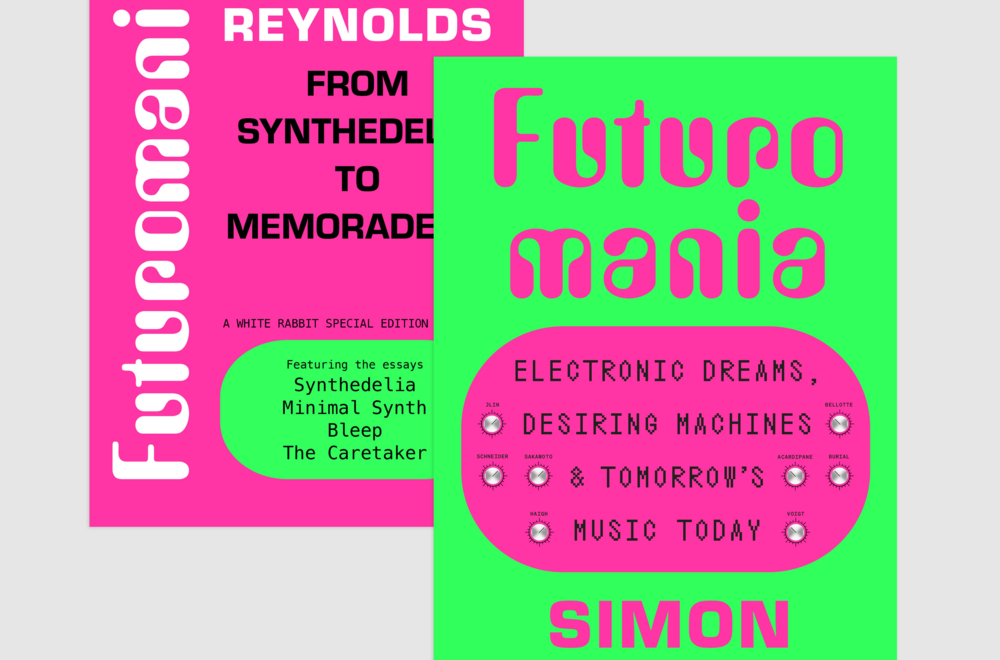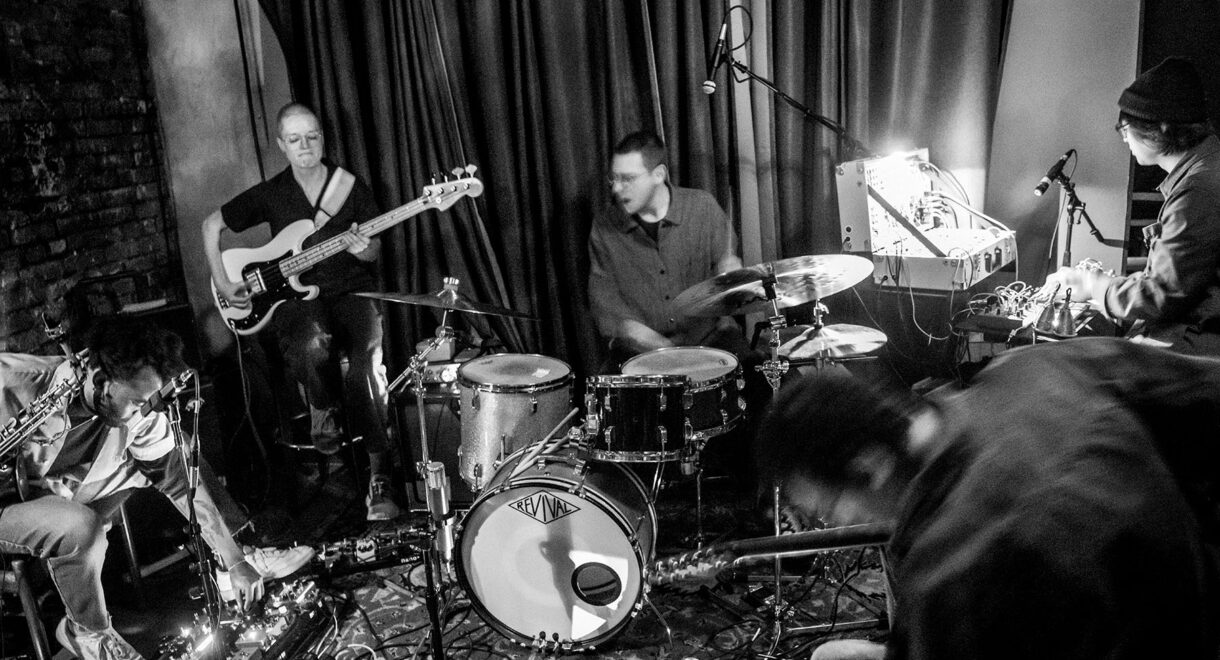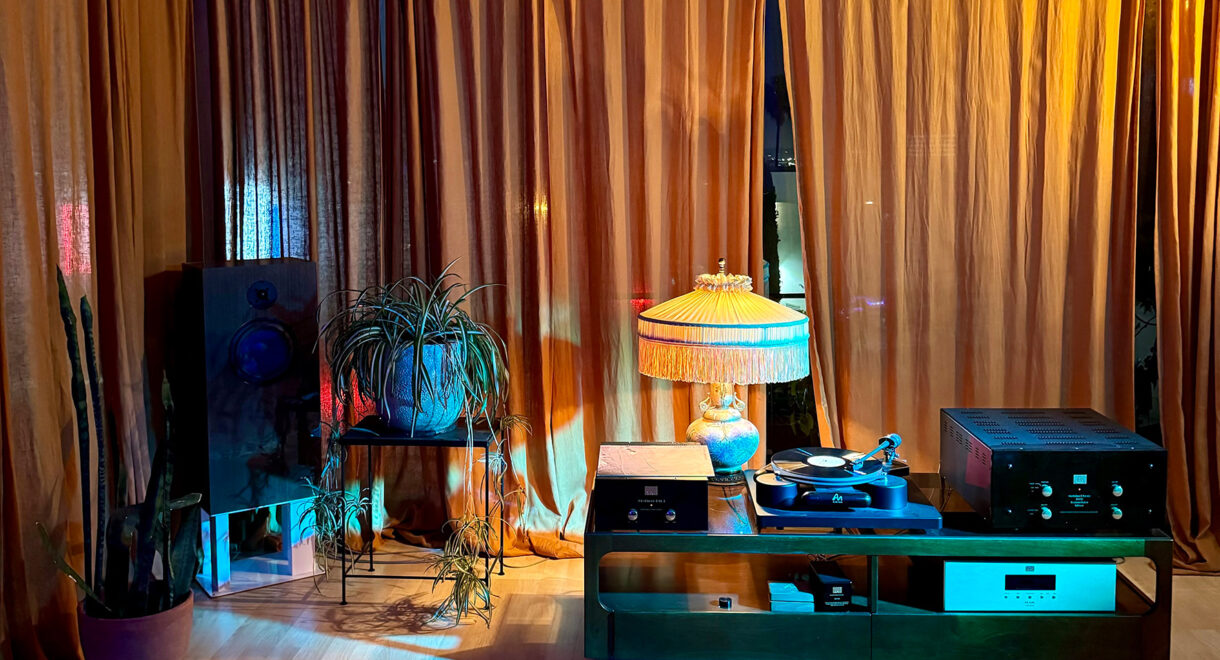The summer is halfway over and you’ve been scrolling for like, what, six weeks straight now? Step away from your phone (after reading this, of course). An analog […]
Light from Three Sides: In Conversation with Melody As Truth’s Jonny Nash

‘Point of Entry’ is a serenely beautiful “personal folk” album perfect for the small hours.
Years before the recent ambient music boom, Scottish musician Jonny Nash and his Amsterdam-based label Melody As Truth began exploring a uniquely delicate, atmospheric take on ambient sound. Operating out of the same building as contemporaries Music from Memory and Red Light Records, the label released a string of iconic releases and storied collaborations from its label owner, along with LA transplant Suzanne Kraft aka Diego Herrera and Italian ambient legend Gigi Masin, who also performs with Nash and (Young) Marco Sterk as Gaussian Curve. Often instrument-based with influences from avant-garde, modern classical, and folk music, Nash and crew’s sound has gained worldwide acclaim for its minimalist approach, relying equally on silence and natural space – along with an honest dedication to the “beautiful truth in melody played from the heart.”
After taking a much-needed break from the label in 2022, Nash has returned for his first solo album in four years. Much like his first album on Melody As Truth, Point of Entry prominently features Nash’s favored instrument – the guitar – and subtly recalls the indie, shoegaze, and folk sounds of the Edinburgh-born artist’s youth. Recorded at his home in Amsterdam during the quiet morning hours, the album is Nash’s most personal work yet and reaches for a “feeling of stillness” that fans of Talk Talk, Durutti Column, and ECM Records will surely enjoy.
Point of Entry is available for pre-order now and will be released Friday, July 21st on vinyl, digital and limited cassette edition via Melody As Truth.
In Sheep’s Clothing’s Phil Cho caught up with Nash shortly after he’d returned from a six-week long biking trip. We talked about his time away from the label, recording process, the scene in Amsterdam, recent inspirations, and more!
Hey Jonny, it’s been a while! How are you and how was the cycling trip? I heard you and Steele Bonus have been biking together?
Actually Steele and I haven’t been cycling yet, but we’ve both individually gotten into it in the last few years. We still need to do a proper trip together, but it’s definitely on the cards. For me, it’s still quite new and I’m a bit of an amateur. The trip was great though, I was away for six weeks cycling through France into Switzerland, Austria, Italy, and Slovenia. I never grew up camping or doing outdoor stuff, so it was a fun venture into the unknown.
I found that it gave me so much energy being outside that much! It was quite challenging at times with weather extremes, and I realized I’m actually quite sensitive to noise in the evening, but overall it was really fulfilling and inspiring. I’m probably the fittest I’ve ever been and I’m going to try and keep it up. As we do this interview, it is actually my first day back. Feels good!
I imagine if you're sensitive to noise, your home base must be quite serene.
Yeah, it’s really important to me, actually. The house where I lived in Amsterdam was very quiet. That’s where I recorded Point of Entry. It was just total silence there. I’ve recently moved into a new house out of the city and also have a small cottage in the countryside where I have spent quite a lot of time over the last couple of years.
Do you feel disconnected from Amsterdam at all now that you’re living further away? How often do you go into the city?
Right now I’m in the middle of working out my new routine and I’m going to see what happens. I still have a studio space in Amsterdam for two days a week. I’ve kept that because I don’t really know what it’s going to be like working in the new house. I don’t know how much I will miss the city, so I’m feeling it out with one foot still in there in the studio. Also, I know if people are in town and I’m wanting to record with them, it’s handy to have space there.
In theory, I reckon the new rhythm will be going in maybe once or twice a week. But I’m also going to try and invest some time into making a nice studio in the new house because there’s a bit more room and it’s also really quiet. In my head, it’s like I don’t need the city at all, but who knows, maybe I need it more than I think… It’s only after you leave that you notice it. Time will tell!
“There are so many things that can get into your head about what you need to be doing with this and that. It was important to drop all those thoughts and just really get back to the basics of making music.”
You’ve lived in Amsterdam for quite a few years now. Has it changed a lot while you’ve been there?
Yeah, for sure. I moved to Amsterdam in 2016. It was really a vibrant period for a lot of stuff there, especially with the kind of music I was into. Everything was kicking off with Red Light Records and Music from Memory, I was working with Gigi Masin and Young Marco on Gaussian Curve, Diego (Suzanne Kraft) had moved there, and I was putting out his records. We had this whole complex in the Red Light District which housed the radio station, the record store, and my studio, amongst other things. Even whilst it was all happening I recognized it as a special time and place – one of the few times in my life where I’ve ended up in the center of something like a scene or community. But with all things like that, they can’t last forever. That period in Amsterdam kind of ran its course, perhaps accelerated due to COVID. The scene that I was involved in is now kind of fragmented, and everyone’s doing their own thing.
Looking back, I’m really fortunate that I was part of this kind of scene when I was setting the label up and establishing things. I think if you’re at the point of starting something up, it’s so helpful to be part of a larger ecosystem. Everyone was amplifying each other at that time. It drew interest from a wider worldwide audience who could grasp that something vibrant was happening in the city. Now that I’m up and running, maybe I can exist a little more independently, but it was so helpful for me to be there at that time. The city itself has changed so much even in the last five years though, it has become even more expensive and the corporate sheen of the place dominates everything a bit too much for me, so in all honesty I’m quite happy to have my base outside of Amsterdam now.
In 2022, you took a break from music to “realign / recenter / re-energise.” What led to this decision and what were you doing during this time?
I think it was this kind of fatigue of running a small label, which a lot of my friends doing similar things suffered from in 2022. There was just so much up against us in terms of the situation with manufacturing. Lead-times, price increases, all sorts of fun stuff! I’d had a string of issues with production too. From a logistical standpoint, a lot of the joy of running the label got sucked out of it, and it just seemed to be more about dealing with problems. There was also this kind of hangover from COVID. You weren’t seeing your contemporaries so much. I felt like I lost a bit of the connection with the scene around me while working more in this isolated bubble.
By 2022, I noticed that my love for releasing music was potentially in jeopardy, so in order to ensure that I didn’t get to a stage where I didn’t enjoy it anymore, I took the time to step back. I wanted to connect with why I’m doing this, what I enjoy about doing it, and examine if it still resonates with me. If it didn’t, that would also have been totally fine, but I felt it important to give myself the space to feel it out. I did that, and in doing so realized that making and releasing music is still something that I get an incredible amount of joy and positivity from. I just think I needed to take that break. I think it’s kind of logical in a way. Although I haven’t released a ton of records on the label, it’s still like 25 records since 2014, with me having some major role in probably at least half of those. I think it was just really necessary to take a break!
It seems like once it starts, it's always about “What's coming up next?” Then there’s that fear that if there's not another one coming up, then people will forget about it. But really, it's just a one year break out of however long the label is going to be…
Yeah, that was my take on it. This is something that I’d like to continue doing for a long time. I think in order to give that a chance, you have to create a healthy relationship with the process. There are so many things that can get into your head about what you need to be doing with this and that. But it was important to drop all those thoughts and just really get back to the basics of making music. I think I was also totally ready to accept that if it wasn’t making me feel good, then I would just stop.
My good friend Lindsay, who ran Firecracker Records, is now a gardener. He was just like, “I’m not feeling this anymore, it’s time to do something else.” I was ready for that, too, if that was how I felt. But I actually found a rhythm of just getting back to the basics: waking up, turning the gear on, making music, making things that I want to listen to, and keeping it super simple. That process gave me so much energy and positivity, which then fed back into this new record. I feel excited about releasing this record in a way that I haven’t felt in recent years.
So it sounds like while taking a break, you were still playing and working on music during this time?
Yeah, that’s a good point to clarify. Through all of that time, I was still working on sketches and making music. That’s always been consistent. It was more the mechanics of running the label which needed to go on the backside and not be the focus. I think I needed to reconnect with myself as an artist or musician rather than a label manager. A lot of stuff that ended up being on Point of Entry were these little sketches and things that began in early 2022 when I was really just messing around.
“At my roots, I’m really a guitar, indie, shoegaze kid who got into electronic music later on. Guitar-centric music, be it folk or indie-rock has kind of always been there as a foundation.”
Do you have a particular process when making music, like time of day or a specific approach? How was your process different for this album?
Well, I think it can really vary from record to record. I often get a burst of creative energy after getting into a good zone, which can be triggered by a change of environment or some new element, instrument, etc. In this case, I’d been working a lot in a studio in Amsterdam, but then I had a free room in my house which I started to bring some gear into. Gradually, my studio morphed into that room. It was the first time that I’d worked on a record from home in a long time, because I shared a studio with Diego for quite some years before in Amsterdam. I got into waking up early. I would work from 7AM to 4PM every day from Monday to Friday in this very quiet space. Then I would shut off the gear and do something else in the evening, not think about it, and just continue on that routine. So really regular hours, pretty structured, and early. I’m definitely not a late worker. But, yeah, often it’s some new shift in environment or new instrumentation that hits the turbo button and then you’re like, okay, let’s go. In this case, it was just finding that it worked well to create music in that room.
I’ve read that Detroit Escalator Company was a big inspiration for your early ambient works on Melody As Truth. Point of Entry has a bit more acoustic guitar and acid folk influence. Was there a particular artist or artists that led you in this new direction?
I’m not sure if I’d actually call it a new direction. At my roots, I’m really a guitar, indie, shoegaze kid who got into electronic music later on. Guitar-centric music, be it folk or indie-rock has kind of always been there as a foundation. Since the start of the label, ambient electronic influences have always mixed with more of this guitar sound – take the first two releases for example. Phantom Actors is probably the release with the most clear nod to Detroit producers like Neil Olliviera, Tony Drake or John Beltran. This was followed with Exit Strategies which is a straight up shoegaze-y guitar record. This dichotomy has always existed in the label. Point Of Entry does, however, fuse electronic and acoustic elements in a way that is a new direction for me.
In 2020 I had a real deep dive into Eastern European folk music while working closely with Irena and Vojtěch Havlovi to prepare a retrospective of their work for Melody As Truth. I spent over a year with them in their world and learning about their approach to recording acoustic music. Although my record sounds totally different to theirs, I was really drawn to using the acoustic guitar more on this record and mic-ing it up in certain ways. The last two records that I made with other musicians, one with Romanian singer and pianist Ana Stamp and the other with Indonesian Tarawangsa player Teguh Permana, were also quite acoustic. When it came to making this record, it was pretty natural that I would mix a lot of acoustic guitar with the electric guitar. The result sits a little bit between the acoustic folk worlds of my last two records and my older electronic stuff.
As for other artists who influenced the record, I always had Finis Africae in my head, even though the record doesn’t sound anything like them. I did a record called Eden in 2017, and I think there are some parallels with that record and Point of Entry. Both records have a sort of smokey or smudgy sound in places, with parts submerged under multilayered textures.
Were you playing around a lot with microphone placing and things like that? Was it all just in that room?
Yeah, I experimented quite a lot. I was working in a fairly small room, but I spent quite some time moving things around and also trying different mic combinations. I got a nice pair of old Neumann KM84 mics two years ago, and they also really influenced the sound of the record. The KM84 is a small condenser mic, but I found it to have a really cool effect when used off-axis on vocals. I also used them a lot on the guitar cabinet as well.
I'm sure that helps with the layering too because the room probably becomes a big part of the sound.
Definitely. I think I’ve been fascinated with this for quite some time. It was one of the things that was always so great about working with Irena and Vojtěch Havlovi. Their music is all about the placement of the microphones. They really make use of the reverb in a space. Their recordings are so warm and human; you really hear the detail of the playing. Their music opened my ears to what’s possible with recording acoustic sources. I just love the way their recordings sound! I also have to mention Mark Hollis’ solo album too, this is probably my favorite record ever in terms of how an album can sound. Interesting mic placement really played a part in this (if anyone wants to read more about it they can here).
I wanted to get into the words a little bit. I’m curious how you approach that side of things. Do words and lyrics come naturally within the process of writing the song or do you have a picture of what you’re trying to convey beforehand?
This album was recorded in a very spontaneous and stream-of-consciousness way. Most of the lyrics just appeared this way, simply a result of being in the right zone to feel what I wanted to express with the piece. There were some anchor points though, fragments that I had collected whilst making the album which kept recurring as thoughts. I’d say as a whole the lyrics are split equally between these fragments and spontaneous improvisation. I visualized the vocals as kind of smoke rings floating upwards, so it was important for them to have a degree of abstraction and ethereal quality.
Certain tracks on this album seem to paint very specific images. For instance, “Silver Sand” seems to speak to a “here I am, in this moment” sort of feeling. Can you talk about that track? Was it inspired by a particular place or memory?
Totally! As I mentioned, I’ve spent a lot of time in a small cottage in the north of Holland over the last couple of years. I’ve really come to love the landscape that surrounds it, with its mix of sand dunes and sea. Silver Sand, like many of the songs on the album, is inspired by spending time in this small corner of the world.

The album cover is beautiful, and really feels connected to the music. Who is the artist? I’m guessing this painting is also based on that place…
The artwork was done by my partner, Denise. Knowing the landscape and having spent so much time there together, she knew better than anyone what I was trying to achieve with the album. It was so cool to work on it together, as ideas for the artwork could be developed alongside the music. I wanted to create an image that really reflects the landscape that was so central to the record, and I couldn’t be happier with how it turned out!
The only feature on this album is Canadian multi-instrumentalist Joseph Shabason, who contributes saxophone on “Ditto,” “Light From Three Sides,” and “Golden Hour.” How did you two meet and what was it like working with him?
I can’t remember how we first got in contact. It was quite a few years ago, maybe we messaged each other on Instagram or something. He was playing with Destroyer at that time, and we got to hang out in Amsterdam. We got on really well and shared a lot of similar influences. He’s a really great dude as well and an amazing musician, of course. A year or two later I organized a solo show for him in Amsterdam, maybe just pre-COVID, and we’ve kept in touch since then. I knew that I wanted to have saxophone on a couple of these tracks to expand the palette, so it was an obvious choice for me to hit him up. A couple of the tracks were pretty well formed when I sent the demos over, but the track “Light From Three Sides” was more sketch-based. I ended up reworking the song based on what I received from Joseph. He nailed all of the tracks on the first go, so it was super easy. He was a total pleasure to work with.
Any plans to play the play live coming up? We’d definitely love to host you at our headquarters…
I’ve really been thinking about this. At first, I was like, “Let’s go and do a bunch of shows,” but I think instead, I really feel like getting cracking on another record. I’ve been wanting to get back into the studio. In addition to that, I want to develop a new format for the live show. I’ve done a lot of solo live shows over the years, and I’d definitely want to approach these new tracks and future ones with at least one or maybe two players. I have a plan to do that mid next year after releasing another EP or record, and tour both of them with the new show.
Lastly, what have you been listening to recently? Any big favorites or new discoveries?
I’ve been listening to quite a lot of guitar music actually. But a short list of things I’ve been enjoying recently would look something like this:
All the Fuubutsushi releases.










